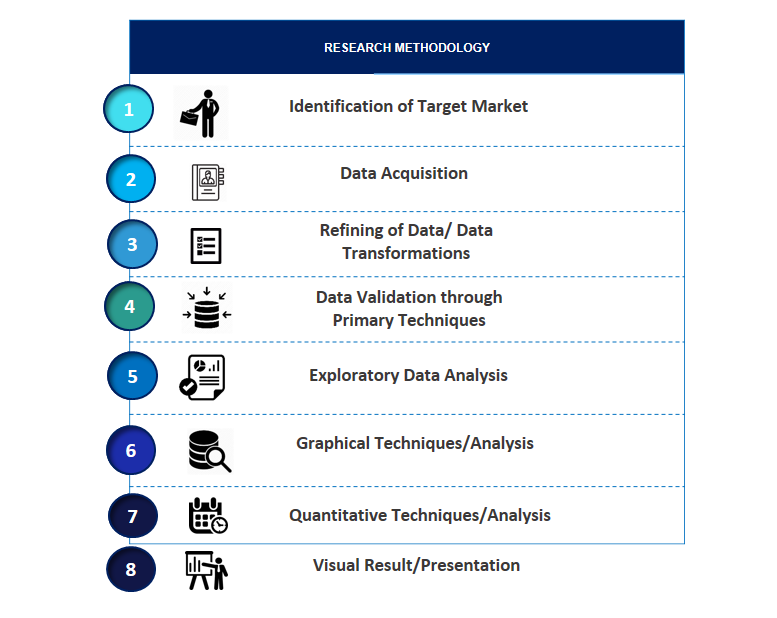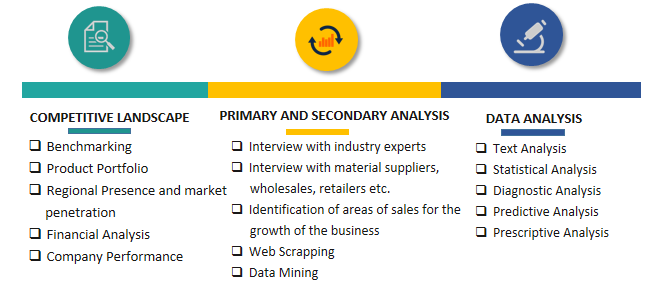United States Hydro Turbine Market Introduction and Overview
According to SPER Market Research, the United States Hydro Turbine Market is estimated to reach USD XX billion by 2033 with a CAGR of 2.25%.
The report includes an in-depth analysis of the United States Hydro Turbine Market, including market size and trends, product mix, applications, and supplier analysis. A hydro turbine is a mechanical device that converts the kinetic and potential energy of moving or falling water into rotating mechanical energy, which is subsequently utilized to generate electricity. Hydro turbines are an essential component of hydropower systems, and they are often found in dams or along fast-flowing rivers. These turbines work by harvesting the energy in water as it travels from a higher to a lower elevation, which is a basic hydrodynamic and physics principle. There are two types of hydro turbines: impulse turbines and reaction turbines. Impulse turbines, like Pelton wheels, are intended for high-head, low-flow conditions. Reaction turbines, such as the Francis and Kaplan turbines, function differently. These turbines are intended for low-head, high-flow applications.
- March 2021: The US Department of Energy (DOE) stated aggressive aims for lowering the cost of solar energy over the next ten years. In addition, the DOE has allocated millions of dollars to reduce prices, improve performance, and accelerate the deployment of solar energy technology by 2030.
- April 2022: Since the Energy Information Authority began collecting statistics, wind energy has grown to become the second-largest source of electricity generation. Furthermore, the government is providing significant support to the wind power sector as part of its America First Policy, which aims to encourage domestic energy output.
Market Opportunities and Challenges
Opportunities- Several reasons are driving growth in the US hydro turbine market. To begin, the growing use of renewable energy to satisfy emissions reduction targets has sparked increased interest in boosting hydroelectric capacity. Hydropower is still a key source of renewable energy in the United States, and the country has huge untapped water resources with the possibility for additional hydropower projects. The dominance of reaction turbines, particularly Francis and Kaplan turbines, contributes to market growth. These turbines are effective at generating electricity from low water heads and are often employed in existing hydropower plants. For example, many turbines of the Grand Coulee Dam, the largest hydroelectric facility in the United States, use response technology, and future projects like Xcel Energy's pumped-storage hydropower scheme are projected to continue.
Challenges- Despite its growing potential, the US hydro turbine sector confronts a number of severe difficulties. Concerns about the environment are one of the most significant barriers. Hydropower plants can damage aquatic ecosystems, particularly by impeding fish migration and changing water quality. These environmental challenges have prompted increased regulatory scrutiny, complicating and delaying the development of new projects. Furthermore, the development of major hydropower facilities is frequently met with opposition from local populations and environmental groups, delaying project completion dates. Another issue is competition from alternative renewable energy sources, namely solar and wind. The cost of solar and wind energy has dropped considerably, making these options more appealing for new energy projects and diverting investment away from hydropower.
Market Competitive Landscape
The United States Hydro Turbine Market is a highly competitive arena due to the presence of multiple global and regional companies in the competitive environment. Leading companies in the industry are GE Renewable Energy, Siemens Energy AG, Andritz AG, Voith GMB & Co. KGaA, Duke Energy Corporation, Georgia Power Company.
Scope of the Report:
| Report Metric | Details |
| Market size available for years | 2020-2033 |
| Base year considered | 2023 |
| Forecast period | 2024-2033 |
| Segments covered | By Size |
| Regions covered | Northeast, Midwest, South, West |
| Companies Covered | GE Renewable Energy, Siemens Energy AG, Andritz AG, Voith GMB & Co. KGaA, Duke Energy Corporation, Georgia Power Company |
COVID-19 Impact on United States Hydro Turbine Market
The COVID-19 pandemic had a severe influence on the US hydro turbine business, mostly due to supply chain bottlenecks, project delays, and reduced energy demand. As lockdowns were established across the United States, energy consumption in both renewable and non-renewable sectors fell sharply, particularly in the early months of the pandemic. Hydropower, which is dependent on steady energy consumption, was notably impacted as industries and businesses restricted operations, and the transportation of hydro turbine components was delayed owing to shipping and border restrictions. One of the most significant consequences was the halting of hydroelectric projects under construction. Many hydropower projects experienced considerable delays due to societal alienation and site access restrictions.
Key Target Audience
- Hydropower Plant Operators
- Government Agencies and Regulators
- Renewable Energy Developers
- Investors and Financial Institutions
- Environmental Organizations
- Manufacturers and Suppliers of Turbines
- Municipal and State Governments
- Academic and Research Institutions
- Environmental Consultants and Engineers
Our in-depth analysis of the United States Hydro Turbine Market includes the following segments:
| By Size: | Large HydropowerSmall HydropowerOther Sizes |
| By Region: | Eastern RegionWestern RegionNorthern RegionSouthern Region |
Key Topics Covered in the Report
- United States Hydro Turbine Market Size (FY’2024-FY’2033)
- Overview of United States Hydro Turbine Market
- Segmentation of United States Hydro Turbine Market by Size (Large Hydropower, Small Hydropower, Other Sizes)
- Statistical Snap of United States Hydro Turbine Market
- Expansion Analysis of United States Hydro Turbine Market
- Problems and Obstacles in United States Hydro Turbine Market
- Competitive Landscape United States Hydro Turbine Market
- Impact of COVID-19 and Demonetization on United States Hydro Turbine Market
- Details on Current Investment in United States Hydro Turbine Market
- Competitive Analysis of United States Hydro Turbine Market
- Prominent Players in the United States Hydro Turbine Market
- SWOT Analysis of United States Hydro Turbine Market
- United States Hydro Turbine Market Future Outlook and Projections (FY’2024-FY’2033)
- Recommendations from Analyst
1. Introduction
1.1. Scope of the report
1.2. Market segment analysis
2. Research Methodology
2.1. Research data source
2.1.1. Secondary Data
2.1.2. Primary Data
2.1.3. SPER’s internal database
2.1.4. Premium insight from KOL’s
2.2. Market size estimation
2.2.1. Top-down and Bottom-up approach
2.3. Data triangulation
3. Executive Summary
4. Market Dynamics
4.1. Driver, Restraint, Opportunity and Challenges analysis
4.1.1. Drivers
4.1.2. Restraints
4.1.3. Opportunities
4.1.4. Challenges
4.2. COVID-19 Impacts of the United States Hydro Turbine Market.
5. Market variable and outlook
5.1. SWOT Analysis
5.1.1. Strengths
5.1.2. Weaknesses
5.1.3. Opportunities
5.1.4. Threats
5.2. PESTEL Analysis
5.2.1. Political Landscape
5.2.2. Economic Landscape
5.2.3. Social Landscape
5.2.4. Technological Landscape
5.2.5. Environmental Landscape
5.2.6. Legal Landscape
5.3. PORTER’s Five Forces
5.3.1. Bargaining power of suppliers
5.3.2. Bargaining power of buyers
5.3.3. Threat of Substitute
5.3.4. Threat of new entrant
5.3.5. Competitive rivalry
5.4. Heat Map Analysis
6. Competitive Landscape
6.1. United States Hydro Turbine Market Manufacturing Base Distribution, Sales Area, Product Type
6.2. Mergers & Acquisitions, Partnerships, Product Launch, and Collaboration in United States Hydro Turbine Market
7. United States Hydro Turbine Market, By Size (USD Million) 2020-2033
7.1. United States Hydro Turbine Market Size, Share and Forecast, By Size, 2020-2026
7.2. United States Hydro Turbine Market Size, Share and Forecast, By Size, 2027-2033
7.3. Large Hydropower
7.4. Small Hydropower
7.5. Other Sizes
8. United States Hydro Turbine Market Forecast, 2020-2033 (USD Million)
8.1. United States Hydro Turbine Market Size and Market Share
9. United States Hydro Turbine Market, By Region, 2020-2033 (USD Million)
9.1. United States Hydro Turbine Market Size and Market Share By Region (2020-2026)
9.2. United States Hydro Turbine Market Size and Market Share By Region (2027-2033)
9.3. Eastern Region
9.4. Western Region
9.5. Northern Region
9.6. Southern Region
10. Company Profile
10.1. GE RENEWABLE ENERGY
10.1.1. Company details
10.1.2. Financial outlook
10.1.3. Product summary
10.1.4. Recent developments
10.2. SIEMENS ENERGY AG
10.2.1. Company details
10.2.2. Financial outlook
10.2.3. Product summary
10.2.4. Recent developments
10.3. ANDRITZ AG
10.3.1. Company details
10.3.2. Financial outlook
10.3.3. Product summary
10.3.4. Recent developments
10.4. VOITH GMB & CO. KGAA
10.4.1. Company details
10.4.2. Financial outlook
10.4.3. Product summary
10.4.4. Recent developments
10.5. DUKE ENERGY CORPORATION
10.5.1. Company details
10.5.2. Financial outlook
10.5.3. Product summary
10.5.4. Recent developments
10.6. GEORGIA POWER COMPANY
10.6.1. Company details
10.6.2. Financial outlook
10.6.3. Product summary
10.6.4. Recent developments
11. Conclusion
12. List of Abbreviations
13. Reference Links
SPER Market Research’s methodology uses great emphasis on primary research to ensure that the market intelligence insights are up to date, reliable and accurate. Primary interviews are done with players involved in each phase of a supply chain to analyze the market forecasting. The secondary research method is used to help you fully understand how the future markets and the spending patterns look likes.
The report is based on in-depth qualitative and quantitative analysis of the Product Market. The quantitative analysis involves the application of various projection and sampling techniques. The qualitative analysis involves primary interviews, surveys, and vendor briefings. The data gathered as a result of these processes are validated through experts opinion. Our research methodology entails an ideal mixture of primary and secondary initiatives.


